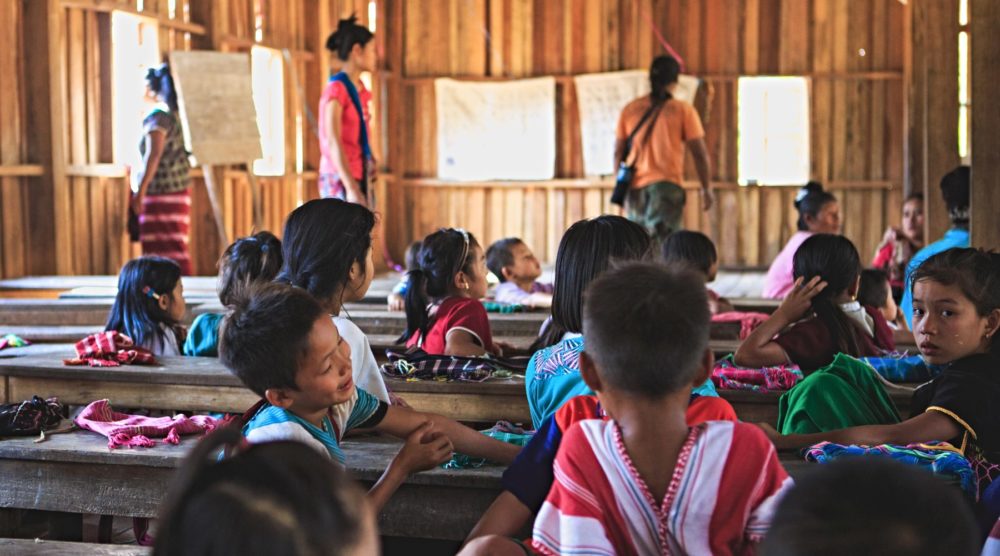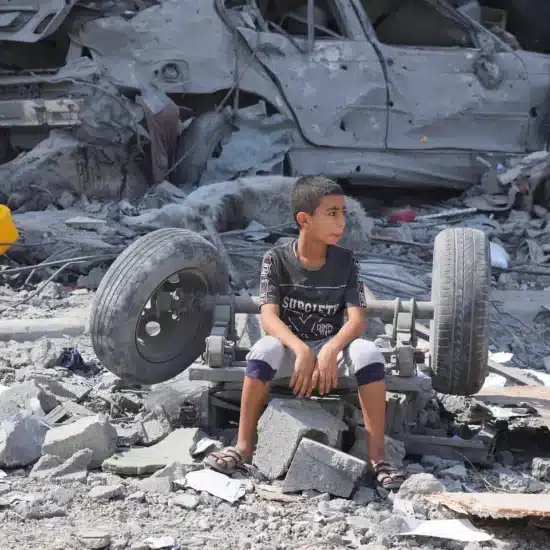
 A majority of the children living in low- and middle-income nations are experiencing “learning poverty,” according to a World Bank report published Oct. 17.
A majority of the children living in low- and middle-income nations are experiencing “learning poverty,” according to a World Bank report published Oct. 17.
“Learning poverty means being unable to read and understand a simple text by age 10,” the report explained. “This indicator brings together schooling and learning indicators: It begins with the share of children who haven’t achieved minimum reading proficiency (as measured in schools) and is adjusted by the proportion of children who are out of school (and are assumed not able to read proficiently).”
Around 53% of children in these nations, and up to 80% of children in the poorest nations, are learning poor.
Across all national income levels, an estimated 40% of children aged 10-14 are learning poor.
While progress is being made to address educational deficiencies, if current trends hold, an estimated 43% of the world’s children living in low- and middle-income nations will still be in situations of learning poverty by 2030.
The World Bank defines national income levels based on gross national income (a country’s annual income divided by its mid-year population):
- Low income: $1,025 or less gross national income per capita
- Lower-middle income: between $1,206 and $3,995
- Upper-middle income: between $3,996 and $12,375
- High income: $12,376 or more
Not being able to read by 10 years old is a leading indicator of negative impacts on a child’s future economic prosperity, civic engagement, health and overall well-being.
Very few children who lack basic skills, such as reading, by this age are able to master them and “catch up” with their peers, often resulting in the gap growing rather than narrowing.
“We now are aware that foundational skills such as basic literacy and numeracy are important drivers of these benefits,” the report said. “The level of skills in a society predicts economic growth better than the level of schooling does.”
The challenges are significant, with half of the world’s children aged 3-6 not currently enrolled in pre-primary education programs and half of school-age refugee children not receiving education.
These realities will need to be addressed in order to meet Sustainable Development Goal 4: “Ensure inclusive and equitable quality education and promote lifelong learning opportunities for all.”
Beyond increasing school enrollment and reducing the dropout rates, improving educational programs is vital to reducing the amount of learning poverty in the world.
While around 80% of children aged 10-14 are enrolled in school, 25% of these students are considered to be learning poor.
“In the low- and middle-income countries, various metrics show that roughly half of students are going through school without acquiring the foundational skills they need,” the report said. “The lack of focus on assuring literacy and numeracy in many countries implies that millions of children leave school without these most basic cognitive skills, let alone the higher-order and job-specific technical skills they will need.”
In addition to efforts focused on expanding educational opportunities and improving educational programs, the report called for a more holistic view of the situation in which access to other necessities (such as clean water and sanitation, health care and proper nutrition) is seen as vital to effectively address educational deficits.
“We know that education is a critical factor in ensuring equality of opportunities,” Annette Dixon, vice president of human development at the World Bank Group, said in a press release announcing the report’s publication. “Many countries have almost eliminated learning poverty – with levels below 5 percent. But in others, it is incredibly high, and we are putting at risk the future of many children. That is morally and economically unacceptable.”
The full report is available here.
This article first appeared on EthicsDaily.com.






